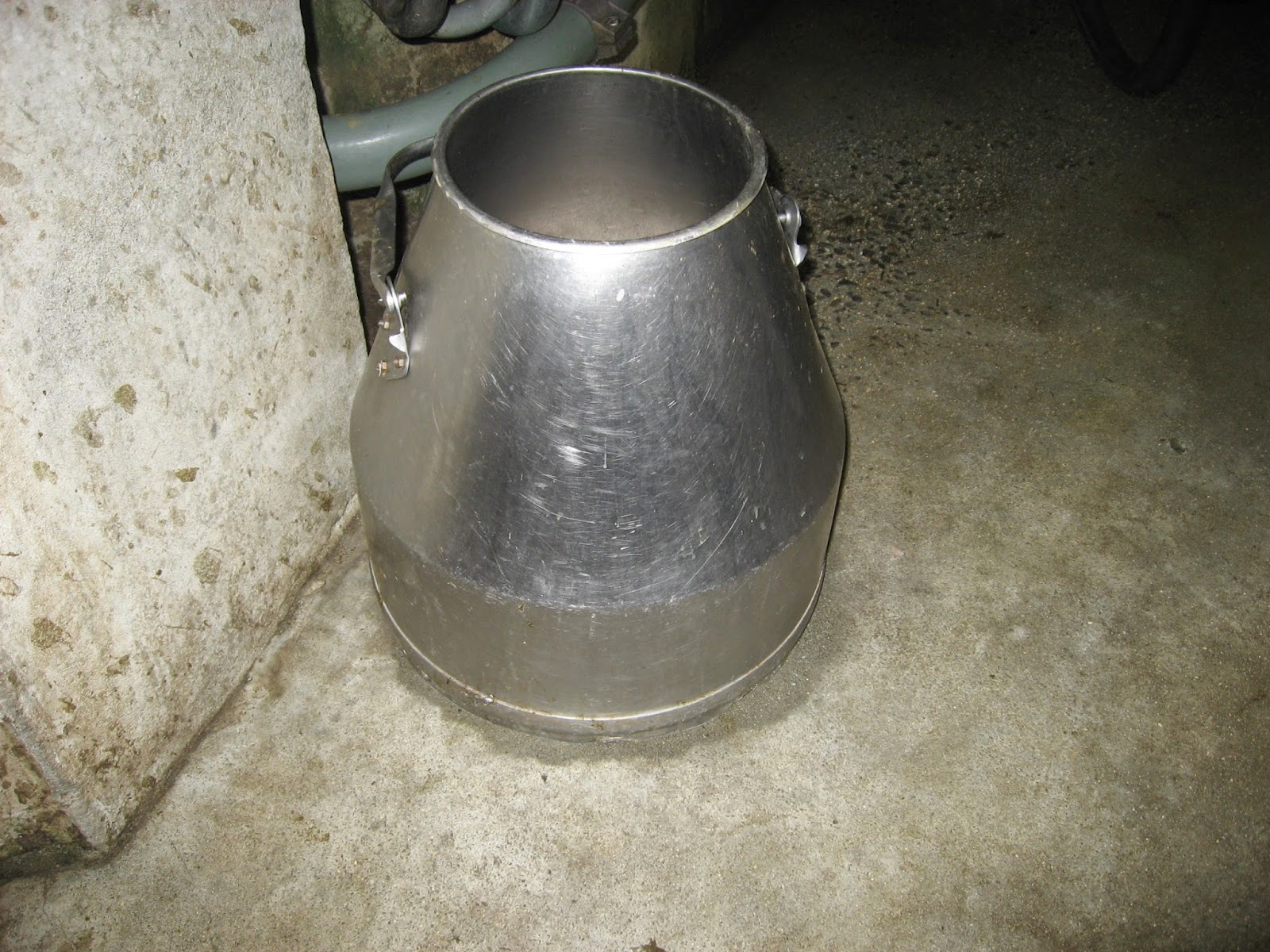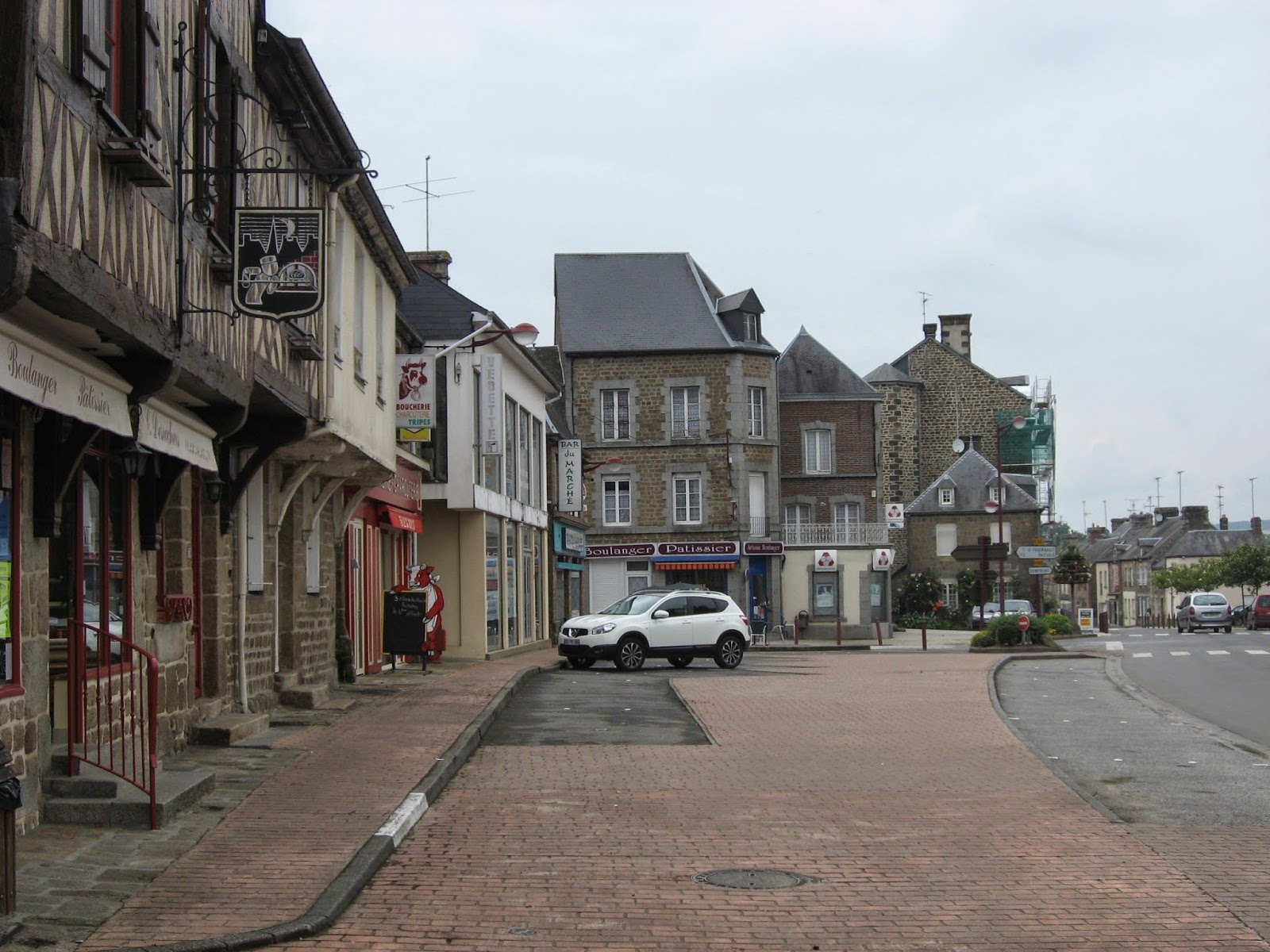Normandy 2014
Cows, Cream, Camembert, Calvados, Cider, 70th anniversary of D-Day and the Battle of Normandy
Monday, June 30, 2014
Au Revoir La Normandie
Carpe diem!
Rejoice while you are alive;
enjoy the day;
live life to the fullest;
make the most of what you have.
It is later than you think.
~ Horace
***
The time to be happy is now.
The place to be happy is here.
~ Robert G. Ingersoll
***
Be happy for this moment.
This moment is your life.
~ Omar Khayyam
***
I certainly can't improve on these quotes - they reflect my thoughts and feelings. We have so enjoyed Normandy and the month spent in this part of the world. It has confirmed to us once again how comfortable we feel to be in France. Perhaps one day, we'll be making this trek once more!
Saturday, June 28, 2014
Champ Secret
A basket full of fluffy kittens. A litter of cuddly puppies. Or a young Normandy calf!
Meet Norma-Fran, my favourite. Her ear-rings indicate that she is known as #2364, but I've given her a name that suits her Normandy, France heritage.
This Normandy breed of cattle is specific to Normandy.
These little girls are separated from their Mom when they're only one day old. The idea is to get rich milk from the Mom, so the calves can't be suckling for long. But don't worry, the calves still get the mother's milk since there is ample production for everyone: the calves, the cheese, and the neighbouring farm.
Their instinct is to reach up to the udder to nurse, so the farmer must teach them to drink from a pail by inserting his own fingers in the pail to imitate a teat and get the calves to drink. They catch on after one or two demos.
They are all separated in these individual kennels, much like a dog kennel, but bigger. This is an Organic farm and very hands-on. Each calf is monitored and supervised closely. If one is sick, they don't want the others to catch anything.
 |
| Oh, that little tongue! |
Sorry for posting so many photos, but I just can't get enough of these little girls!
They are all under one month of age.
Ok, onto the workings of the farm. This is where all the "fouin" (hay) is kept. Once it is cut in the field, it is brought here directly and not bunched into square or round bails. It is constantly drying to ensure that no mold forms, so solar panels on the roof add a few degrees of heat and "separations" between the layers provide good ventilation.
The milking cows come here after they've been milked to enjoy a bit of hay. Mostly, they live off the green grass of the fields, unlike big agribusiness that serves silage to its cattle.
"Bio" means organic. The cows don't get antibiotics unless absolutely necessary and then their milk is discarded for 2 weeks instead of the required one week on non-organic farms. Nor are they given any hormones or fed hay that has been sprayed with pesticides.
This is the milking theatre. Although there is some automation, it is not fully automated. The farmer must still attach the milking machine to the cow, which provides an opportunity to check the cow, identify any problems, ensure she is healthy. It takes 1.5 hours to milk 80 cows, morning and evening, plus the time it takes to bring in the cows from the field. A very time-consuming business!
They don't even have dogs or a tractor to assist in getting the cows from the field to the milking parlour. They don't want the cows to be stressed in any way, so barking dogs and loud machinery are out of the question.
The monitors in the milking parlour aren't as sophisticated as some newer models, but it does identify the yield for each cow. A cow is productive for about 10 years before she is sent to the abattoir. (I use this French word so my readers won't get too stressed out...) She will have quite a few calves during her lifetime because that is what ensures a rich milk production.
The entire farm is heated with forced air using these wood chips as the combustible. Believe it or not, at the end of the year they only have about one pail of ash residue! Talk about great energy efficiency.
These calves are older than Norma-Fran but not yet old enough to start having calves of their own. They are a curious bunch and crowded close to get a good look, even sticking their heads where they shouldn't.
Karl has decided to name this group: Parmigiana, Piccata, Marsala...
Ok, onto the production of the most delicious Camembert cheese imaginable! There are many steps to making cheese, and more work because it is all organic. This cheese is made from raw milk and not pasteurized. There is so much milk coming from this farm's 80 cows that only the evening milk is kept for the cheese. The morning milk is sold to another organic farm producing one of the three best known Normandy cheeses: Camembert, Livarot, and Pont l'Évêque.
The milk is left to sit for a while until it starts to separate, the cream floating to the top. There are five scoops of thick milk added to each individual cheese container, with a 40 minute delay between each scoop. This allows the milk to drain and the "cheese" to settle. Lots of information about serum production and how this is added to the milk given to the calves to keep them healthy, and spread on the feed of the older calves for the same purpose.
When the rounds of cheese have sat for the required length of time, they are taken out of the containers, each by hand, and turned over to complete the drying and ripening process.
The cheese is sold with "a heart", a centre that is not yet ripe. This is to ensure that each buyer gets the type of cheese they like, either young and fresh, or older and more pungent.
For sanitary reasons, we were not allowed in the rooms where the cheese is made, but there are big windows to give us a great view. Perhaps not great for a camera, though.
We of course brought some of this delicious Camembert home to eat with a baguette and some rosé. The name is delightful: "Champ Secret" means "Secret Field", and indeed, the secret to making such delectable cheese is found in the field, in the goodness of the earth where it all begins.
I would love to see this cheese available in Canada! I'll check with "Les Amis du Fromage" to see if they might be interested.
Thought for the day: The Merciers bought this farm in 1980 and waited 10 years to ensure that the crop yield had no remnants of pesticides, and only then could they be called organic. They then got cows and sold the milk to organic cheese production houses. They have only been making their own Camembert for a couple of years. They have three designations but had to wait a long time and work very hard to get this stamp of approval. Now they are producing a "gold standard".
A Cut Above
While I got a haircut at the local "Salon de Coiffure", Karl had a walk through Céaucé to take photos of houses. We don't want to forget this little town.
Don't you think this house is alive? There is a face here, with the upper windows housing beautiful eyes.
I've discovered that I haven't really been spelling the name of this town correctly. It is not Ceaucé, but Céaucé, with an accent on both "e"s. The first spelling is pronounced "So Say" whereas the second is pronounced "Say Oh Say". The locals say it so fast that it does sound like the first...
The red bar across the name of Céaucé indicates that you are leaving the town. No sooner the town ends that the countryside begins.
A mare and her foal enjoying the early evening. We are on our way out to dinner.
 |
| The Before |
 |
| Stephanie Coiffure |
Don't you think this house is alive? There is a face here, with the upper windows housing beautiful eyes.
I've discovered that I haven't really been spelling the name of this town correctly. It is not Ceaucé, but Céaucé, with an accent on both "e"s. The first spelling is pronounced "So Say" whereas the second is pronounced "Say Oh Say". The locals say it so fast that it does sound like the first...
The red bar across the name of Céaucé indicates that you are leaving the town. No sooner the town ends that the countryside begins.
 |
| The After |
 |
| Long, gangly legs |
Subscribe to:
Posts (Atom)






























































